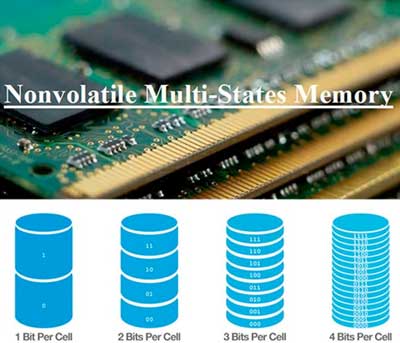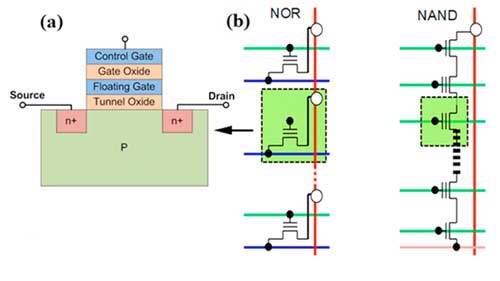| Oct 12, 2020 |
Multi-state data storage leaving binary behind
(Nanowerk News) Electronic data is being produced at a breath-taking rate.
|
|
The total amount of data stored in data centres around the globe is of the order of ten zettabytes (a zettabyte is a trillion gigabytes), and we estimate that amount doubles every couple of years.
|
|
With 8% of global electricity already being consumed in information and communication technology (ICT), low-energy data-storage is a key priority.
|
|
To date there is no clear winner in the race for next-generation memory that is non-volatile, has great endurance, highly energy efficient, low cost, high density, and allows fast access operation.
|
 |
| Storage of four bits per cells increases memory capacity by a factor of 24 (16). (Image: FLEET)
|
|
The joint international team comprehensively reviews 'multi-state memory' data storage, which steps 'beyond binary' to store more data than just 0s and 1s (ACS Applied Materials and Interfaces, "Nonvolatile Multistates Memories for High-Density Data Storage").
|
Multi-state memory: More than just zeroes and ones
|
|
Multi-state memory is an extremely promising technology for future data storage, with the ability to store data in more than a single bit (ie, 0 or 1) allowing much higher storage density (amount of data stored per unit area.
|
|
This circumvents the plateauing of benefits historically offered by 'Moore's Law', where component size halved abut every two years. In recent years, the long-predicted plateauing of Moore's Law has been observed, with charge leakage and spiralling research and fabrication costs putting the nail in the Moore's Law coffin.
|
|
Non-volatile, multi-state memory (NMSM) offers energy efficiency, high, nonvolatility, fast access, and low cost.
|
|
Storage density is dramatically enhanced without scaling down the dimensions of the memory cell, making memory devices more efficient and less expensive.
|
Neuromorphic computer mimicking the human brain
|
|
Multi-state memory also enables the proposed future technology neuromorphic computing, which would mirror the structure of the human brain. This radically-different, brain-inspired computing regime could potentially provide the economic impetus for adoption of a novel technology such as NMSM.
|
 |
| One of the technologies reviewed: flash drives. (a) Schematics of a typical flash cell architecture. (b) Comparison of NOR and NAND flash structures. (Image: FLEET)
|
|
NMSMs allow analog calculation, which could be vital to intelligent, neuromorphic networks, as well as potentially helping us finally unravel the working mechanism of the human brain itself.
|
The study
|
|
The paper reviews device architectures, working mechanisms, material innovation, challenges, and recent progress for leading NMSM candidates, including:
|
|
– Flash memory
– magnetic random-access memory (MRAM)
– resistive random-access memory (RRAM)
– ferroelectric random-access memory (FeRAM)
– phase-change memory (PCM)
|


